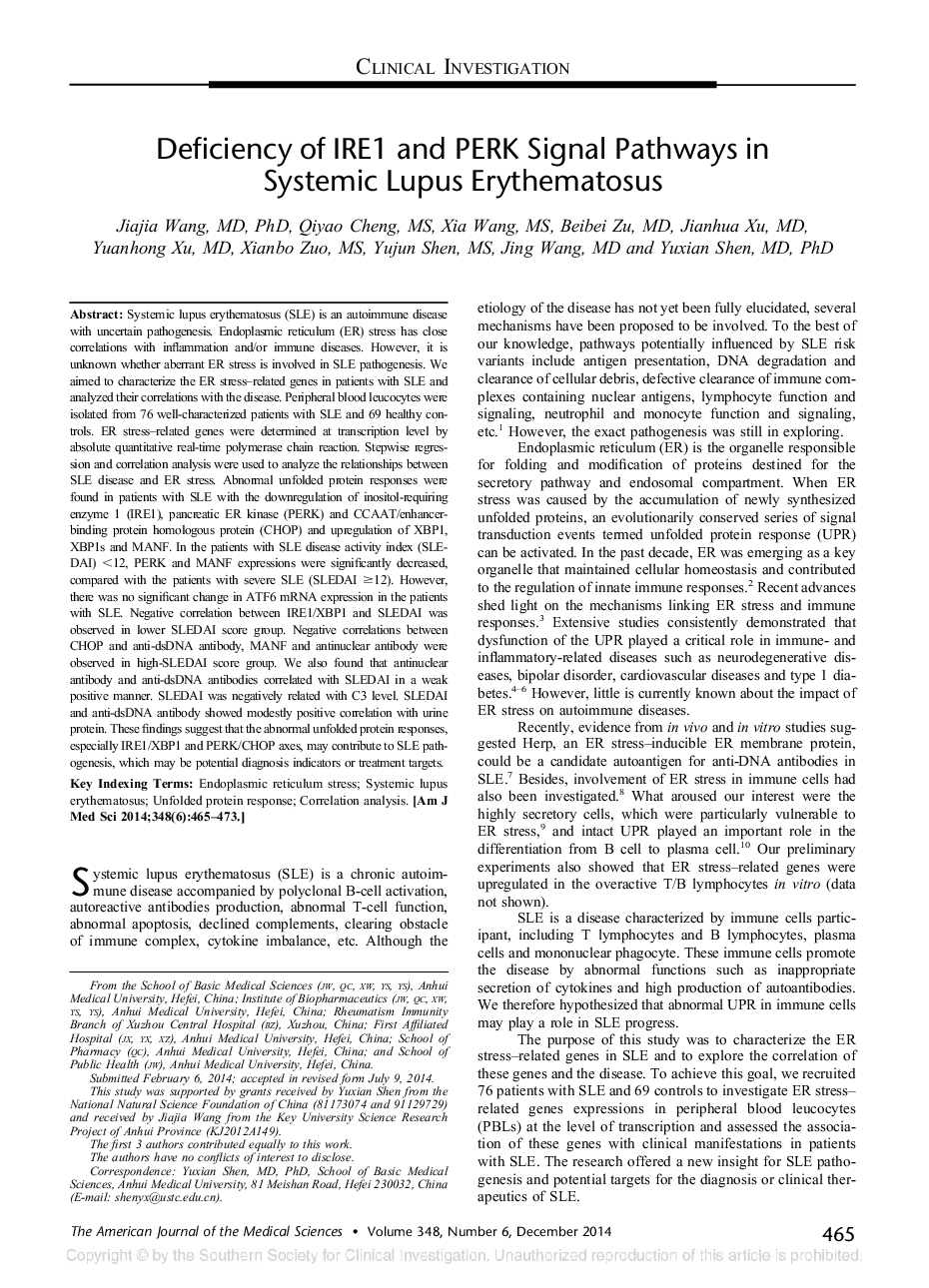| کد مقاله | کد نشریه | سال انتشار | مقاله انگلیسی | نسخه تمام متن |
|---|---|---|---|---|
| 5931910 | 1573142 | 2014 | 9 صفحه PDF | دانلود رایگان |
عنوان انگلیسی مقاله ISI
Deficiency of IRE1 and PERK Signal Pathways in Systemic Lupus Erythematosus
دانلود مقاله + سفارش ترجمه
دانلود مقاله ISI انگلیسی
رایگان برای ایرانیان
کلمات کلیدی
موضوعات مرتبط
علوم پزشکی و سلامت
پزشکی و دندانپزشکی
کاردیولوژی و پزشکی قلب و عروق
پیش نمایش صفحه اول مقاله

چکیده انگلیسی
Systemic lupus erythematosus (SLE) is an autoimmune disease with uncertain pathogenesis. Endoplasmic reticulum (ER) stress has close correlations with inflammation and/or immune diseases. However, it is unknown whether aberrant ER stress is involved in SLE pathogenesis. We aimed to characterize the ER stress-related genes in patients with SLE and analyzed their correlations with the disease. Peripheral blood leucocytes were isolated from 76 well-characterized patients with SLE and 69 healthy controls. ER stress-related genes were determined at transcription level by absolute quantitative real-time polymerase chain reaction. Stepwise regression and correlation analysis were used to analyze the relationships between SLE disease and ER stress. Abnormal unfolded protein responses were found in patients with SLE with the downregulation of inositol-requiring enzyme 1 (IRE1), pancreatic ER kinase (PERK) and CCAAT/enhancer-binding protein homologous protein (CHoP) and upregulation of XBP1, XBP1s and MANF. In the patients with SLE disease activity index (SLE-DAI) < 12, PERK and MANF expressions were significantly decreased, compared with the patients with severe SLE (SLEDAI â¥Â 12). However, there was no significant change in ATF6 mRNA expression in the patients with SLE. Negative correlation between IRE1/XBP1 and SLEDAI was observed in lower SLEDAI score group. Negative correlations between CHOP and anti-dsDNA antibody, MANF and antinuclear antibody were observed in high-SLEDAI score group. We also found that antinuclear antibody and anti-dsDNA antibodies correlated with SLEDAI in a weak positive manner. SLEDAI was negatively related with C3 level. SLEDAI and anti-dsDNA antibody showed modestly positive correlation with urine protein. These findings suggest that the abnormal unfolded protein responses, especially IRE1/XBP1 and PERK/CHOP axes, may contribute to SLE pathogenesis, which may be potential diagnosis indicators or treatment targets.
ناشر
Database: Elsevier - ScienceDirect (ساینس دایرکت)
Journal: The American Journal of the Medical Sciences - Volume 348, Issue 6, December 2014, Pages 465-473
Journal: The American Journal of the Medical Sciences - Volume 348, Issue 6, December 2014, Pages 465-473
نویسندگان
Qiyao MS, Xia MS, Yujun MS, Yuxian MD, PhD, Beibei MD, Jianhua MD, Yuanhong MD, Xianbo MS, Qiyao MS, Jiajia MD, PhD,